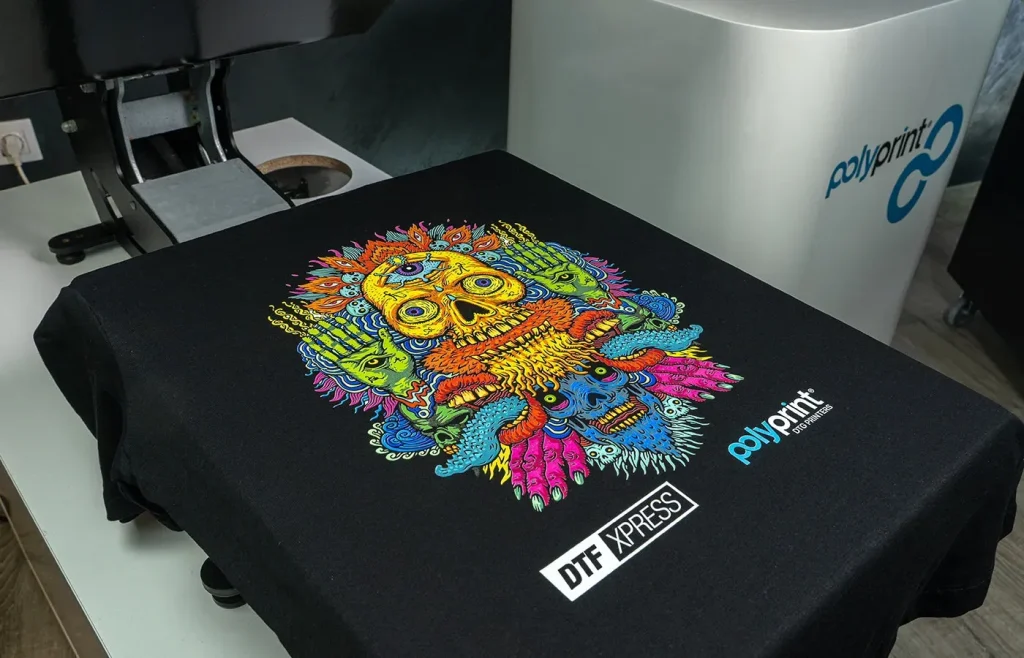DTF printing, also known as Direct-to-Film printing, is revolutionizing the way businesses approach custom apparel printing in today’s fast-paced market. This innovative printing technology allows for the transfer of designs onto films, which can then be easily applied to a variety of fabrics, making it an ideal solution for those seeking print customization. With its ability to produce high-quality, vibrant prints, DTF printing stands out among other printing methods, particularly for small business owners who emphasize sustainable printing practices. As consumer demands shift towards unique and personalized products, the versatility of DTF technology makes it increasingly appealing for creating customized garments. This guide will delve into everything you need to know about DTF printing, from its advantages and emerging trends to the challenges that industry players must navigate.
In the landscape of modern printing solutions, ‘Direct-to-Film’ printing techniques have emerged as a pivotal player, reshaping the custom apparel production niche. This method, often referred to as film-based printing, utilizes state-of-the-art technology to effortlessly transfer ink onto various substrates, showcasing designs that captivate the eye. With trends gravitating towards eco-friendly practices and print customization, this approach not only adapts well to diverse fabric types but also holds strong potential for sustainable printing initiatives. As the market evolves, the increasing desire for personalized items presents valuable opportunities for businesses to stand out. Exploring the dynamics of film printing will unveil a wealth of possibilities for entrepreneurs and creative designers alike.
Understanding DTF Printing Technology
DTF printing technology revolutionizes the way designs are transferred onto fabric, utilizing a printing system that applies ink directly to a specialized film. This film is then heat-pressed onto various types of materials, allowing for exceptional print quality and durability. The process starts with a digital design that is printed onto the film, creating vibrant and detailed graphics that are capable of withstanding multiple washes without fading. This innovative method eliminates the need for screens or plates, making it ideal for custom apparel printing where high versatility is required.
The advantages of DTF printing technology are numerous, particularly for businesses looking to offer unique products. With its ability to print on a wide range of materials—including polyester, cotton blends, and even dark fabrics—DTF printing stands out from traditional techniques. Moreover, the low setup costs make it highly feasible for small orders and one-off designs, promoting greater customization opportunities without sacrificing quality. As such, DTF printing is increasingly being adopted by stylish apparel brands and independent creators.
Frequently Asked Questions
What is DTF printing and how does it work?
DTF printing, or Direct-to-Film printing, is a revolutionary printing technique that transfers ink onto a film and then applies it to fabrics using heat and pressure. This technology allows for vibrant, high-quality prints on various materials, making it ideal for custom apparel.
What are the benefits of using DTF printing technology?
DTF printing technology offers several advantages, including high-quality prints with exceptional color vibrancy, versatility on different fabric types, and cost-effectiveness for small batch production, making it a great choice for custom apparel printing.
How does DTF printing compare to other custom apparel printing methods?
Unlike traditional screen printing, DTF printing can be applied to a wider range of materials, including polyester and blends. It provides superior detail and durability, making it a more versatile option for custom apparel printing.
What trends in DTF printing should businesses watch for in 2025?
Key trends in DTF printing for 2025 include technological advancements that enhance printing speeds and quality, increasing consumer demand for customization, and a shift towards sustainable printing practices.
Is DTF printing a sustainable printing option?
Yes, DTF printing can be a sustainable printing option as many companies are adopting eco-friendly inks and practices. This focus on sustainability meets the growing consumer demand for environmentally responsible printing solutions.
What challenges does the DTF printing industry face?
The DTF printing industry faces challenges such as intense competition from traditional and digital printing methods. Companies must continuously innovate and adapt to market trends to stay competitive.
| Key Points | Details |
|---|---|
| Introduction to DTF Printing | DTF printing is a modern, efficient method enhancing customization in printing. |
| What is DTF Printing? | Transfers ink onto film, then applied to garments, working well on varied fabrics. |
| Advantages of DTF Printing | High-quality prints, versatility across materials, cost-effective for small batches. |
| Key Trends for 2025 | Technological advancements, enhanced vibrancy and durability, growing demand for customization, sustainability initiatives. |
| Challenges Facing the Industry | Increased competition requires continuous innovation and adaptability to niche markets. |
| Importance of Innovation | Staying updated with technology is crucial to thrive in a fast-evolving market. |
Summary
DTF printing is revolutionizing the way customization is approached in the apparel and printing industries. As a game-changing technology, it provides high-quality, vibrant results that cater to diverse fabric types. The year 2025 will showcase significant growth in this sector, driven by technological advancements, trends favoring sustainability, and an increasing demand for personalized designs. Businesses that harness the power of DTF printing will not only meet customer desires for customization but also maintain a competitive edge in an increasingly crowded market.

